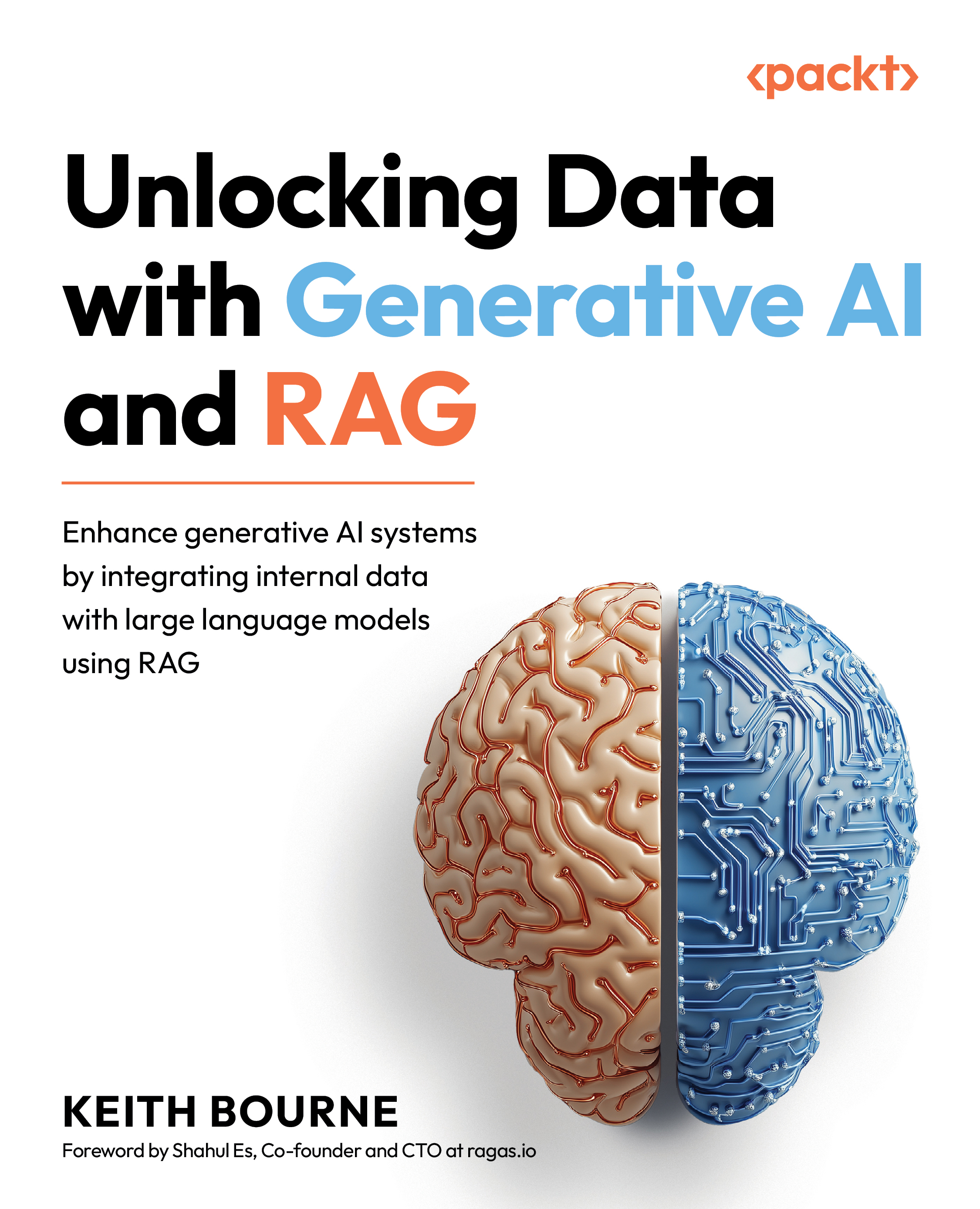Code lab 10.3 – LangChain LLMs
We now turn our attention to the last key component for RAG: the LLM. Just like the retriever in the retrieval stage, without the LLM for the generation stage, there is no RAG. The retrieval stage simply retrieves data from our data source, typically data the LLM does not know about. However, that does not mean that the LLM does not play a vital role in our RAG implementation. By providing the retrieved data to the LLM, we quickly catch that LLM up with what we want it to talk about, and this allows the LLM to do what it is really good at, providing a response based on that data to answer the original question posed by the user.
The synergy between LLMs and RAG systems stems from the complementary strengths of these two technologies. RAG systems enhance the capabilities of LLMs by incorporating external knowledge sources, enabling the generation of responses that are not only contextually relevant but also factually accurate and up to date....
































































